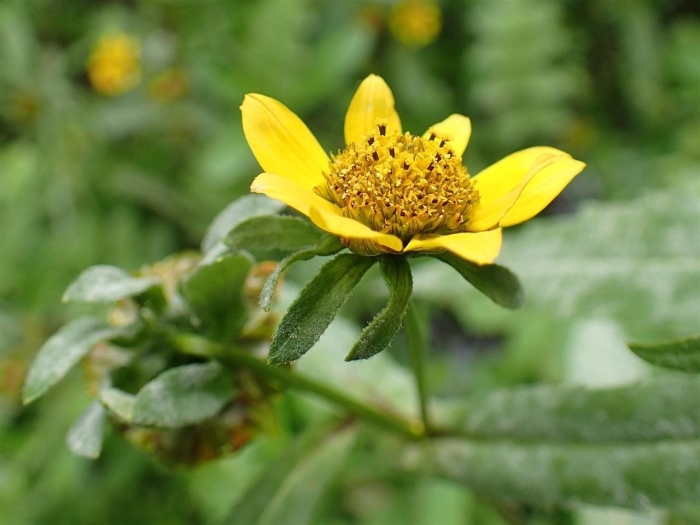Nodding Beggartick
(Bidens cernua)
Nodding Beggartick (Bidens cernua)
/
/

Yoan MARTIN
CC BY-SA 4.0



















































Estimated Native Range
Summary
Nodding Beggartick thrives in wet, saturated soils and is often found in areas with seasonal flooding. Its ability to grow in such conditions makes it a useful plant for rain gardens and wetland restoration projects. It is also valued for its attractiveness to pollinators such as bees and butterflies. In cultivation, it requires full sun to part shade and can tolerate a range of soil drainage conditions, from fast to slow. While it is not typically grown for ornamental purposes, it can be used in naturalized areas or wildlife gardens. Gardeners should be aware that Bidens cernua can self-seed prolifically and may become weedy or invasive outside its native range.CC BY-SA 4.0
Plant Description
- Plant Type: Herb
- Height: 1-3 feet
- Width: 0.2-0.3 feet
- Growth Rate: Rapid
- Flower Color: Yellow
- Flowering Season: Summer
- Leaf Retention:
Growth Requirements
- Sun: Full Sun, Part Shade
- Water: High
- Drainage: Fast, Medium, Slow
Common Uses
Bee Garden, Bird Garden, Butterfly Garden, Low Maintenance, Showy Flowers, Water Garden
Natural Habitat
native to wetland areas such as marshes, swamps, and along stream banks in the Subarctic and Temperate Northern Hemisphere
Other Names
Common Names: Nodding Beggar’s Ticks , Nodding Beggarticks , Nodding Burr Marigold , Nodding Bur-Marigold , Pitchfork , Sticktight , Nodding Beggar-Ticks , Nodding Bur-Marigold , Bur Marigold , Nodding Bur Marigold
Scientific Names: Bidens cernua , Bidens cernua var. radiata , Bidens glaucescens , Bidens cernua subsp. radiata , Bidens minima , Bidens cernua var. elliptica , Bidens cernua var. dentata , Bidens cernua var. discoidea , Bidens prionophylla , Bidens gracilenta
GBIF Accepted Name: Bidens cernua L.